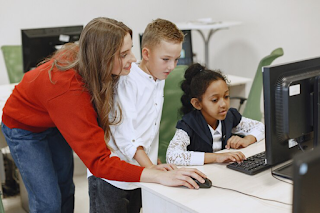Unlocking the Power of Active Learning Spaces
Traditional
classroom settings often include students sitting latently in rows of work
areas, tuning in to lectures, and taking notes. However, teachers are
increasingly recognizing the limitations of this approach and they have to make
more dynamic and interactive learning situations. Active learning spaces are
outlined to promote student engagement, collaboration, and interest,
cultivating deeper learning and basic considering aptitudes. In this article, we
investigate the concept of dynamic learning spaces and their potential to
transform the educational experience.
Defining Active learning spaces:
Active
learning spaces, also known as flexible or agile classrooms, are designed to
facilitate dynamic and collaborative learning encounters. These spaces are
characterized by adaptable furniture arrangements, mobile seating, intuitive
innovation, and versatile learning situations that can be easily customized to
oblige diverse teaching strategies and activities. By breaking absent from the
traditional classroom format, dynamic learning spaces empower understudies to
take an active part in their learning prepare and lock in with course fabric in
more important and interactive ways.
Benefits of active learning spaces
·
One of the key benefits of active learning spaces is their
capacity to advance student engagement and support. By giving
opportunities for hands-on exercises, group talks, and intuitive learning
experiences, these spaces make a more enthusiastic and stimulating learning
environment. Students are enabled to work together, share thoughts, and
collaborate on ventures, developing a sense of community and camaraderie among
peers. This collaborative learning approach not as it were enhances student
engagement but also advances deeper understanding and maintenance of course
material.
Additionally, for students working on their PhD dissertations,
utilizing PhD
dissertation proofreading services can ensure the accuracy, coherence,
and professionalism of their academic writing, enhancing the overall quality of
their research.
·
In expansion to advancing student engagement, active learning
spaces can moreover progress learning results by catering to assorted learning
styles and inclinations. With adaptable seating courses of action and versatile
innovation, teachers can oblige diverse educating strategies and exercises,
catering to the personal needs and inclinations of students. Whether through
gathering work, peer-to-peer talks, or interactive multimedia introductions,
dynamic learning spaces offer an assortment of learning encounters that offer
to distinctive learning styles and advance a more comprehensive and evenhanded
learning environment.
·
Besides, active learning spaces empower active cooperation and
basic thinking skills by challenging students to think creatively, illuminate
problems collaboratively, and apply knowledge in real-world settings. Instead
of passively devouring data, students are effectively included within the
learning handle, and locked in with course fabric in important ways that
promote more profound understanding and retention. This active engagement
cultivates the advancement of basic considering aptitudes, communication
abilities, and problem-solving abilities, preparing students for success within
the 21st-century workforce. Additionally,
for students researching tax-related topics, exploring Tax
Dissertation Topics can provide valuable insights and guidance for
their academic endeavors.
Conclusion
In
conclusion, active learning spaces have the control to convert instructive
involvement by advancing student engagement, collaboration, and basic
considering abilities. By making dynamic and intelligent learning situations,
teachers can foster deeper learning experiences that cater to different
learning styles and preferences. With their potential to upgrade learning
results, progress student motivation, and prepare students for victory within
the 21st century, active learning spaces are unlocking the power of active
learning and forming the end of education.


Comments
Post a Comment